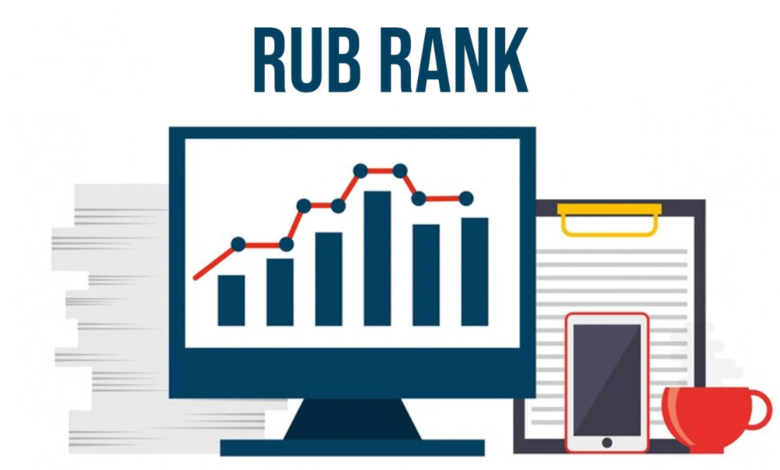Understanding RUB Ranking: A Comprehensive Guide

In the digital age,RUB Ranking are everywhere. Whether you’re looking up products, services, or even people, rankings provide a way to assess performance, quality, and popularity. One area where rankings have gained significant traction is in the realm of RUB ranking. But what does RUB stand for, and why does it matter? In this article, we’ll take an in-depth look at what RUB ranking is, its importance, and how it impacts various sectors.
What is RUB Ranking?
RUB Ranking in its simplest form, is a method of evaluating or assessing entities, typically based on performance metrics within a specific context. The acronym RUB stands for Ranked Under Benchmarks—meaning it refers to a system where various players, companies, individuals, or products are ranked according to set standards or benchmarks within their respective industries or categories. These benchmarks are usually determined by a combination of factors such as quality, consistency, value, and user feedback.
RUB ranking isn’t specific to one industry. You can find this system being applied across a wide range of sectors. For instance, in business, it may be used to assess companies based on profitability or customer satisfaction. In sports, it could be used to rank athletes according to performance metrics like speed, endurance, and accuracy.
The idea behind RUB ranking is to give a transparent, standardized system for comparison. It helps set clear expectations and offers users a framework for evaluating their options. Think of it as a way of benchmarking what’s truly “top-tier” in any given field, helping you decide where to direct your attention, investment, or trust.
How RUB Ranking Works
RUB ranking operates on the principle of comparison against a set of established standards. It often relies on quantifiable data and measurable factors. For example, in the tech industry, it might consider things like performance benchmarks (processor speed, load times, etc.), customer reviews, and price points. These criteria are then weighted and aggregated to give an overall rank that can be compared against others in the same field.
The process generally involves the following steps:
- Benchmark Identification: The first step is to determine what benchmarks will be used for ranking. These could range from performance metrics to user satisfaction, industry standards, or innovation levels.
- Data Collection: After establishing the benchmarks, the next step is gathering data on all entities that need to be ranked. This could involve surveys, reviews, testing results, or financial statements.
- Comparison & Scoring: Once all the data is collected, the next step is to compare each entity against the benchmarks. Scores are assigned based on how well the entity meets or exceeds the set standards.
- Final Ranking: Finally, based on the scores, a ranking is assigned, placing each entity about one another. This ranking can then be updated periodically as new data comes in or as the benchmarks evolve.
In practice, RUB rankings can be dynamic, adjusting over time as conditions change. The ultimate goal is to provide an ongoing, real-time measurement of where an entity stands relative to its peers.
Importance of RUB Ranking in Today’s Market
RUB ranking serves as an essential tool in the world of business and beyond. Whether you’re a consumer looking to make an informed purchasing decision or a company aiming to boost its market share, understanding it can give you a competitive edge.
For Consumers
When it comes to consumers, RUB rankings provide transparency. They allow buyers to evaluate options against clear and consistent criteria. Imagine you’re choosing a new smartphone. it help you compare various devices based on aspects like battery life, camera quality, processing power, and cost-effectiveness. This not only saves you time but ensures you make a more informed decision.
For instance, a smartphone with a top it might outperform others in performance benchmarks, meaning you’re likely getting more value for your money. Whether it’s technology, fashion, or food, RUB rankings give consumers a clear pathway to the best products available.
For Businesses
For businesses, RUB rankings are a way to measure their success and see how they stack up against competitors. A high it can serve as a form of validation, signaling to potential customers or investors that the company is performing well in key areas. It also helps companies identify areas for improvement and innovation.
Moreover, businesses that understand their it within their industry can leverage this information for marketing purposes. By showcasing their ranking in advertisements or promotional material, they can attract more customers, build trust, and solidify their position in the market. In this sense, RUB rankings are not just a tool for comparison—they’re a way to enhance brand visibility and credibility.
The Role of RUB Ranking in Online Platforms
Online platforms are a key driver of RUB ranking systems. Whether it’s an e-commerce website, a review platform, or a digital service provider it are increasingly used to determine the visibility of products, services, or content. Many online businesses use RUB rankings as part of their algorithm to showcase the most relevant results to users.
E-Commerce and RUB Rankings
In e-commerce, RUB rankings are often integrated into search engine algorithms. For example, when you search for a specific product on an online retail site, it could influence the order in which products appear. The system will prioritize higher-ranking items that meet certain criteria, such as customer reviews, pricing, and product features. This ensures that customers see the most reputable and reliable options first.
For e-commerce platforms, using RUB rankings to present products helps increase conversion rates. When products are ranked highly, users are more likely to trust the seller and make a purchase. This not only drives sales but enhances the overall shopping experience for consumers.
Social Media and RUB Rankings
Similarly, social media platforms have adopted RUB ranking mechanisms to prioritize content and interactions. Whether it’s a post, a video, or a comment, it help determine what gets the most exposure. Influencers and content creators with higher engagement rates, relevance to trending topics, or established credibility may be ranked higher than others. This ensures that users see the most relevant, popular, or engaging content in their feeds.
For businesses, social media RUB rankings can be a game-changer. By improving their engagement and content quality, they can climb in the rankings, attracting more followers, enhancing their brand presence, and ultimately driving higher sales and conversions.
RUB Ranking in Academic and Research Contexts
In academia, RUB ranking plays a crucial role in evaluating the performance of institutions, researchers, and publications. The rankings help determine which universities are leading in specific research areas, which researchers are most impactful, and which journals are most cited. This is essential for guiding future research, attracting funding, and influencing collaborations across disciplines.
University Rankings
For example, universities worldwide are often ranked using RUB-based systems that measure factors like research output, teaching quality, student satisfaction, and employability rates. These rankings can influence student choice, funding allocation, and even national policies on education.
University it often rely on a combination of student feedback, academic research citations, and faculty achievements. Institutions that consistently rank well in these areas attract more talented students and prestigious faculty, creating a feedback loop of success and growth.
Research Publications and Citations
Similarly, research papers and publications can also be ranked using RUB metrics. Researchers who publish highly-cited work in top-tier journals often rank highly within their field. These rankings help establish credibility, influence academic careers, and guide funding decisions.
In this context, it systems help ensure that the most influential, innovative, and high-quality research is recognized and disseminated effectively. It also encourages academic institutions to prioritize excellence in research and teaching, contributing to the overall development of knowledge across various fields.
Challenges and Criticisms of RUB Ranking Systems
Despite their widespread use, RUB ranking systems are not without their challenges. Critics argue that these rankings may sometimes oversimplify complex entities and ignore important nuances. For instance, when ranking companies based solely on performance metrics, aspects like company culture or social responsibility may be overlooked.
Moreover, it systems can sometimes create pressure to perform in specific areas at the expense of others. For example, businesses might focus on improving their ranking in a particular benchmark rather than investing in long-term sustainability or customer satisfaction.
Another challenge lies in the potential for manipulation. Some entities might engage in tactics that artificially boost their rankings, such as gaming customer reviews or manipulating performance metrics. This can undermine the credibility of the ranking system and create an uneven playing field.
Conclusion: The Future of RUB Ranking Systems
The future of RUB ranking systems looks bright, especially as industries continue to evolve and data becomes more readily available. With advancements in AI and data analytics, RUB rankings are likely to become even more accurate and dynamic, offering deeper insights into the performance and potential of various entities.
However, it will be essential for it systems to adapt to new challenges and remain transparent, ensuring that they accurately reflect the true quality and value of entities being ranked. This will help users, businesses, and researchers make informed decisions and maintain trust in these essential ranking systems.
In summary, RUB ranking offers a powerful tool for assessing and comparing performance across a broad spectrum of industries and sectors. Whether you’re a consumer, business owner, or academic, understanding and leveraging it can offer significant advantages in today’s data-driven world.



